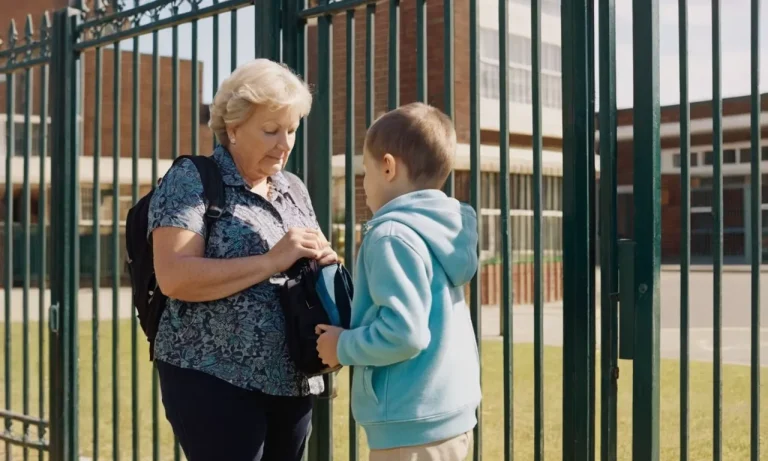Education has been a cornerstone of human civilization since ancient times, shaping the minds of generations and propelling societies forward. Amidst the vast expanse of knowledge, one question that has intrigued scholars and history enthusiasts alike is: What was the first school in the world?
If you’re short on time, here’s a quick answer to your question: The first known school in the world is believed to be the Shishi School, established in ancient China around 3000 BC.
In this comprehensive article, we will delve into the fascinating origins of formal education, exploring the earliest known schools and their significance in shaping the educational landscape we know today.
From the ancient civilizations of China and India to the pioneering institutions of Greece and Rome, we will unravel the rich tapestry of educational history, shedding light on the remarkable achievements and innovations that paved the way for modern learning.
The Shishi School: The Cradle of Ancient Chinese Education
The Emergence of the Shishi School
In the annals of ancient Chinese history, the Shishi School stands as a pioneering institution that laid the foundations for formal education. Founded around 1000 BC during the Western Zhou Dynasty, this school was established in the city of Shishi, located in present-day Henan Province.
It was here that the seeds of organized learning were sown, paving the way for the rich intellectual traditions that would shape Chinese civilization for centuries to come.
According to historical accounts from sources like the Encyclopedia Britannica, the Shishi School emerged as a response to the need for educating the sons of aristocratic families and preparing them for roles in government and society.
The school’s curriculum was designed to instill values, ethics, and practical skills essential for leadership and administration. It quickly gained a reputation for its rigorous and comprehensive approach to education, attracting students from far and wide.
Curriculum and Teaching Methods
The Shishi School’s curriculum was a well-rounded blend of subjects that aimed to cultivate both intellectual and practical abilities. Students were instructed in subjects such as literature, history, philosophy, mathematics, and military strategy.
However, the school’s true innovation lay in its emphasis on ethical and moral education, which formed the core of its teachings.
The school’s teaching methods were groundbreaking for their time. Instructors employed a combination of lectures, discussions, and hands-on learning experiences. They encouraged critical thinking and debate, fostering an environment where students could challenge ideas and engage in intellectual discourse.
This approach was a stark contrast to the rote memorization techniques prevalent in many educational institutions of the time.
One of the most remarkable aspects of the Shishi School was its commitment to inclusivity. Unlike many other ancient schools that catered exclusively to the elite, the Shishi School welcomed students from diverse backgrounds, including commoners and even foreign students from neighboring regions.
This diversity of perspectives enriched the learning experience and contributed to the school’s reputation as a center of intellectual excellence.
Significance in Chinese History
The impact of the Shishi School on Chinese history cannot be overstated. Its alumni went on to hold influential positions in government and society, shaping the course of the nation’s political, cultural, and intellectual development.
Many of the school’s teachings and principles were later incorporated into the philosophical and ethical frameworks of Confucianism, Taoism, and other major schools of thought that emerged in ancient China.
Moreover, the Shishi School’s legacy extended beyond its immediate influence. It served as a model for subsequent educational institutions, inspiring generations of scholars and educators to further refine and expand the boundaries of knowledge.
Its emphasis on critical thinking, moral education, and holistic learning paved the way for the flourishing of Chinese intellectual traditions that continue to resonate today.
As we explore the origins of formal education, the Shishi School stands as a testament to the enduring human pursuit of knowledge and wisdom. Its impact on Chinese civilization and the wider world serves as a reminder of the transformative power of education and the lasting influence of those who dared to challenge the status quo and pave the way for intellectual enlightenment.
😊
Ancient Indian Gurukuls: Preserving Knowledge Through Oral Tradition
The Gurukul System
Long before the establishment of formal schools, India had a unique system of education known as the Gurukul. This ancient tradition of learning dates back to the Vedic era, where knowledge was passed down from generation to generation through an oral tradition.
Gurukuls were residential educational institutions where students, known as shishyas, lived with their teachers, or gurus, and received holistic education encompassing spiritual, moral, and academic teachings.
The guru-shishya relationship was the cornerstone of the Gurukul system. Gurus were revered as embodiments of knowledge and wisdom, and their teachings extended far beyond academic subjects. They imparted life lessons, instilled values, and guided their students on the path of self-discovery.
This intimate bond between teacher and student fostered an environment conducive to deep learning and personal growth. According to Britannica, the Gurukul system emphasized the importance of discipline, respect, and a commitment to learning.
Subjects Taught in Gurukuls
The curriculum in Gurukuls was comprehensive, covering a wide range of subjects. Students were taught:
- The Vedas and Upanishads: These ancient Hindu scriptures formed the foundation of spiritual and philosophical learning.
- Sanskrit: As the language of the Vedas, Sanskrit was a crucial part of the curriculum.
- Mathematics: Subjects like arithmetic, geometry, and algebra were studied extensively.
- Astronomy and Astrology: The study of celestial bodies and their movements was an integral part of the curriculum.
- Ayurveda: The ancient Indian system of medicine was taught to promote holistic well-being.
- Dharma and Ethics: Moral values, ethics, and righteous conduct were emphasized in the teachings.
The teaching methods in Gurukuls were interactive and engaging. Students were encouraged to ask questions, engage in discussions, and participate in debates, fostering critical thinking and analytical skills.
The oral tradition of learning was supplemented by practical demonstrations and hands-on experiences, ensuring a well-rounded education.
Influential Gurukuls and Their Legacy
Throughout history, several influential Gurukuls have left an indelible mark on Indian education and culture. One of the most renowned Gurukuls was the Nalanda University, which flourished from the 5th to the 12th century CE.
At its peak, Nalanda attracted scholars and students from across the world, making it a center of intellectual excellence. The Nalanda library, known as the Dharma Gunj, housed an impressive collection of manuscripts on various subjects, showcasing the depth of knowledge preserved in Gurukuls.
Another famous Gurukul was the Takshashila University, located in modern-day Pakistan. This ancient institution, dating back to the 6th century BCE, was renowned for its teachings in subjects like medicine, mathematics, politics, and military science.
Renowned scholars like Chanakya, the author of the Arthashastra, studied at Takshashila, further solidifying its reputation as a hub of learning.
The legacy of the Gurukul system continues to influence modern Indian education. While the traditional residential model has evolved, the principles of holistic learning, respect for teachers, and the pursuit of knowledge remain deeply ingrained in Indian culture.
Many schools and institutions in India still incorporate elements of the Gurukul system, such as shlokas (verses) recitation, yoga, and meditation, to promote overall well-being and personal growth alongside academic excellence.
The Gurukul tradition serves as a reminder of India’s rich educational heritage and its commitment to preserving and disseminating knowledge through generations.
The Pioneering Schools of Ancient Greece and Rome
The concept of formalized education can be traced back to ancient civilizations, with the Greeks and Romans playing a pivotal role in shaping the foundations of Western education. Their pioneering efforts laid the groundwork for the modern educational systems we know today.
The Platonic Academy and Aristotle’s Lyceum
In ancient Greece, two schools stood out as beacons of knowledge and intellectual pursuit. The Platonic Academy, founded by the renowned philosopher Plato in 387 BCE, was one of the earliest known institutions of higher learning.
It operated for nearly a millennium, attracting students from all over the ancient world to study subjects such as philosophy, mathematics, and astronomy. The Academy’s influence on Western thought cannot be overstated, as it fostered critical thinking and the pursuit of knowledge.
Not to be outdone, Aristotle, a student of Plato, established his own school known as the Lyceum in 335 BCE. Here, Aristotle taught a diverse range of subjects, including logic, physics, metaphysics, and ethics.
The Lyceum’s approach emphasized empirical observation and systematic study, laying the foundations for the scientific method. According to World History, the Lyceum attracted students from as far as Macedonia and Persia, a testament to its reputation and influence.
Roman Education and the Influence of Greek Philosophy
While the Greeks pioneered formal education, the Romans embraced and adapted many of their philosophical and educational principles. Roman education initially focused on practical skills like rhetoric and law, but as Greek culture permeated Roman society, the study of philosophy and liberal arts gained prominence.
The Roman orator and philosopher Cicero, for instance, was deeply influenced by Greek thought and played a crucial role in transmitting it to the Roman world.
As the Roman Empire expanded, the demand for educated individuals grew, leading to the establishment of schools throughout the empire. These schools taught a curriculum heavily influenced by Greek philosophy, with subjects like grammar, rhetoric, logic, arithmetic, geometry, astronomy, and music forming the core of the liberal arts education.
The Lasting Impact on Western Education
The legacy of ancient Greek and Roman education has endured for centuries, shaping the educational systems of countless civilizations. The concept of liberal arts education, which emphasizes critical thinking, communication, and a well-rounded understanding of various disciplines, can be traced back to these pioneering schools. Additionally, the Socratic method of questioning and inquiry, as practiced by Socrates, Plato, and Aristotle, remains a cornerstone of modern pedagogy.
Today, many universities and colleges around the world continue to uphold the traditions and values of ancient Greek and Roman education. The pursuit of knowledge, the cultivation of critical thinking, and the appreciation for diverse disciplines remain integral to the mission of higher education institutions worldwide.
😊
The Evolution of Schools: From Ancient to Modern Times
The Spread of Education Across Civilizations
The concept of formal education can be traced back to ancient civilizations, where the pursuit of knowledge and the transmission of wisdom were deeply ingrained in cultural traditions. From the ancient Sumerian scribal schools in Mesopotamia to the renowned philosophical academies of ancient Greece, education played a pivotal role in shaping societies and preserving their intellectual legacies.
As civilizations rose and fell, the thirst for knowledge persisted, leading to the establishment of educational institutions across the globe.
In ancient India, the Gurukula system flourished, where students (known as shishyas) resided with their teacher (the guru) to receive a comprehensive education encompassing subjects such as philosophy, literature, mathematics, and the arts.
Meanwhile, in ancient China, the Imperial Academy was established during the Han Dynasty, laying the foundations for a meritocratic system of civil service examinations.
Significant Milestones in Educational History
Throughout history, various civilizations have made significant contributions to the development of educational systems. The Islamic Golden Age (8th to 13th centuries) witnessed the establishment of madrasas, centers of advanced learning that played a crucial role in the preservation and dissemination of knowledge.
In Europe, the first universities, such as the University of Bologna (founded in 1088) and the University of Oxford (founded around 1096), emerged, revolutionizing higher education and fostering intellectual discourse.
The Renaissance period (14th to 17th centuries) marked a pivotal shift in educational philosophy, with a renewed emphasis on humanism, the arts, and scientific inquiry. During this time, scholars like Erasmus and John Locke advocated for progressive educational methods, laying the groundwork for modern pedagogical approaches.
The Enlightenment era (17th and 18th centuries) further fueled the pursuit of knowledge, rationalism, and the democratization of education.
The Emergence of Modern Educational Systems
The 19th and 20th centuries witnessed the birth of modern educational systems, driven by the industrialization of societies and the need for a skilled workforce. Compulsory education laws were enacted in many countries, making education accessible to a broader population.
Pioneering educators like Maria Montessori and John Dewey introduced innovative teaching methods that emphasized hands-on learning, child-centered approaches, and the development of critical thinking skills.
Today, education has become a fundamental human right, with organizations like UNESCO advocating for inclusive and equitable quality education worldwide. According to UNESCO’s data, the global primary school enrollment rate reached 89% in 2018, a remarkable achievement🎉.
However, challenges such as access to education, quality of instruction, and resource allocation persist, particularly in developing nations. The pursuit of knowledge continues, driven by the belief that education is the key to unlocking human potential and shaping a better future for all.
Conclusion
The quest to uncover the first school in the world has led us on a remarkable journey through ancient civilizations and their pioneering educational institutions. From the Shishi School in China to the Gurukuls of India, and the philosophical academies of Greece and Rome, we have witnessed the profound impact these early centers of learning had on shaping the foundations of modern education.
As we reflect on the evolution of schools, it becomes evident that the pursuit of knowledge has been an enduring human endeavor, transcending geographical boundaries and cultural divides. Each civilization contributed its unique perspectives and innovations, enriching the tapestry of educational history and paving the way for the diverse and dynamic educational systems we have today.
While the specifics of the first school may remain shrouded in the mists of time, the legacy of these ancient institutions serves as a testament to the unwavering human spirit and our insatiable thirst for knowledge.
As we continue to explore and unravel the mysteries of our past, we can draw inspiration from these pioneering efforts, recognizing the transformative power of education in shaping our present and guiding our future.






